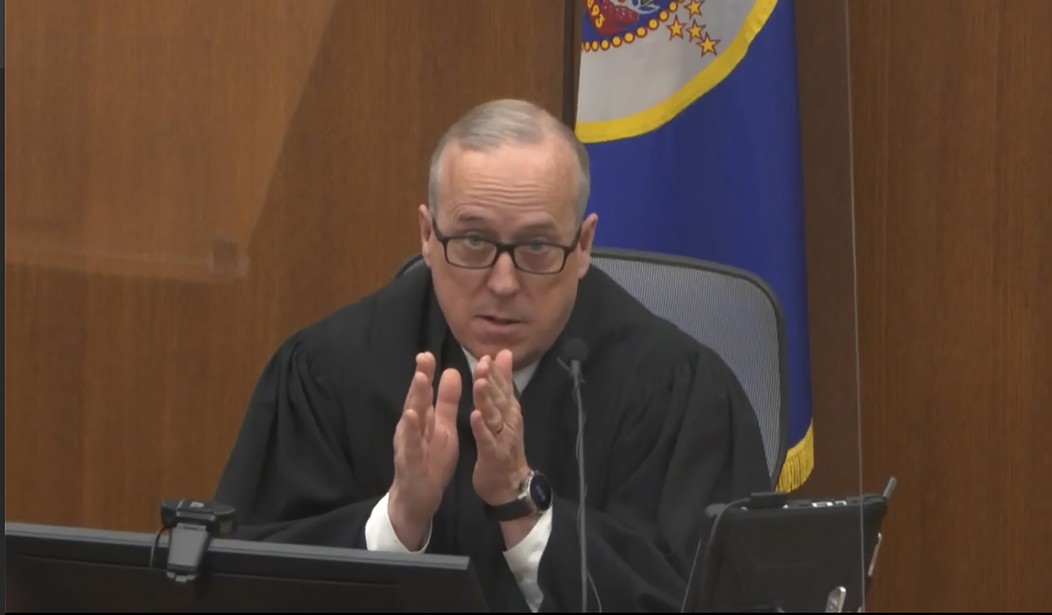The hand-picked private attorneys acting as prosecutors have rested their case against Derek Chauvin, the now-former Minneapolis police officer who was seen on a video holding down George Floyd. Floyd died in police custody in May of 2020. Floyd’s horrific death sparked riots, looting, and conflagration in several cities, including Minneapolis, Portland, Seattle, Kenosha, and elsewhere. Portland’s riots went on for months. The specter of riots, indeed, which have broken out nearby due to a police shooting, hang over the verdict in the trial.
Chauvin is accused of three counts in the prosecution’s hopes that the jury will get him on something. The third count, which had been tossed by the trial judge, was added back when prosecutors appealed to a higher court.
ABC 10 News talked to a local law expert who broke down the charges against the former officer.
“None of the charges require the state to prove that Derek Chauvin intentionally killed Mr. Floyd,” said Rachel Moran, a professor at University of St. Thomas Law School in Minneapolis. “The difference in the three charges is really mostly about Derek Chauvin’s mental state.”
For the first charge of second degree unintentional felony murder, the state needs to prove Chauvin committed a felony, in this case assault, and it led to Floyd’s death.
Moran said this means proving that Chauvin knew he was committing a crime and that he was assaulting Floyd when the 46-year-old died as a result.The charge of third degree “depraved mind” murder means that the prosecution must prove Chauvin caused the death of Floyd with an act “eminently dangerous to others… without regard for human life.”
As defense attorney Robert Barnes explains the prosecution “must have established intent to cause serious bodily harm under manslaughter count and still must prove intent that [Chauvin] thought he was going to kill [Floyd] in the top count against him.”
CA Governor Gavin Newsom Finally Admits He’s Not Bigger Than Jesus
The prosecution’s case was spread over 12 days. Attorneys chosen by antifa-friendly Attorney General Keith Ellison spent much of the first week with a parade of people on the street that day, who saw some of the interactions between the police and Floyd. Nearly all of them cried on the stand. The witnesses included Floyd’s fiancé Courteney Ross, who testified that “Floyd,” as she called him, was with his drug dealer at the time the cops came on the day he died. She testified Floyd was back on drugs after a brief period of sobriety, had nearly died two months before due to an overdose of similar drugs he’d been given the day of his death, and that he called her “Mama.” Floyd may have referred to her when he cried out during his arrest.
That Floyd was with his drug dealer in the Mercedes SUV when cops rolled up came as a surprise to most people. Evidence was presented of Floyd and Morries Hall, his alleged dealer, getting rid of pills and fake $20 bills was brought out by the defense in cross examination. Police found half eaten pills with Floyd’s DNA in the Mercedes and in the police car, where Floyd initiated his fight the first officers on scene. He began his his numerous protestations that he couldn’t breathe at this point when cops were only trying to get him in the back of the squad car.
Floyd’s dealer refused to testify in the case since his actions that day – giving Floyd drugs – could have been responsible for his death. Hall took the 5th to avoid incriminating himself.
Following those witnesses, the prosecution called a parade of expert witnesses, many of whom worked for free because they felt so strongly about the case. Each witness had his or her reasons for volunteering for duty, and you can probably figure those out.
Chilling: California Senate Committee Votes to Make it Easier to Dox Citizens Who Sign Recall Petitions
It was at the point where Nelson showed a use-of-force expert’s video of Chauvin’s knee not being on the neck of George Floyd. The prosecution immediately pivoted from saying George Floyd died from Chauvin’s knee on his neck and began describing it as the “neck area,” which magically covered his back and shoulder. It was a remarkable departure from the narrative we’ve been sold by prosecutors and the media for nearly a year now.
Up to this point, the prosecution hadn’t laid out its theory for how Floyd died, but from then on it shape-shifted from being the neck hold to the prone position police laid him in – actually Floyd laid himself down when police relented after grappling with him. Eventually, the prosecution settled on lack of oxygen for his cause of death, to which you might think “no kidding” but there is more to than that.
Defense attorney Nelson expertly picked apart most of the prosecution’s witnesses in this phase and, indeed, planned to bring back one of the witnesses for the defense. The prosecution, however, pulled its case out of the crapper with its medical experts. This is when the prosecution began to hone in on its reason for Floyd’s death.
One of the most bizarre experts was the one most quoted on social media, Dr. Martin Tobin, who came bearing a collection of unique models which had been handed over to defense attorney Eric Nelson only the night before. Nelson looked the next day as if he’d spent all night trying to make sense of them.
Tobin said he knew by watching the videos of the incident exactly when Floyd died.
The testimony didn’t comport with use-of-force expert’s, and was a departure from other experts, but the pulmonologist said with certainty exactly when Floyd suffered brain damage and died.
He also said with certainty that Floyd’s 90% and 75% blockages of his heart, the deadly dose of fentanyl and meth combo, smoking cigarettes, COVID, and fighting with the cops had nothing whatsoever to do with Floyd not getting enough oxygen; that Floyd wouldn’t have died but for Chauvin’s knee being somewhere on Floyd.
Tobin’s claims blew up what we non-experts have been told about COVID, smoking, and fentanyl.
Things learned from today's state witnesses at #ChauvinOnTrial:
Smoking doesn't harm most people's lungs
It's really hard to die from fentanyl
It's laughable Floyd's heart condition had impact
He couldn't breathe in the car or before Chauvin got there, but died from his knee— Victoria Taft – Parler, Minds, Facebook, 5VTShow (@VictoriaTaft) April 8, 2021
Even attorney Barnes was shaking his head over this testimony.
Tobin said that he died at 4 or 5 minute mark of the video. If so, the question of turning him over, not providing CPR in front of the hostile crowd, all that stuff happens after Tobin says he was dead. So that can’t be a legal factor now under Tobin’s own theory.
The prosecution chose to put the only witness who examined Floyd’s body at the tail end of their medical expert testimony. This was because he’d already gone rogue by declaring that Floyd probably died of a fentanyl overdose, suggesting Chauvin had nothing to do with it. The Hennepin County medical examiner said that if he’d just seen Floyd’s toxicology testing he would have declared him to be an overdose death.
The 15-person jury, 12 jurors and three alternates, in the Chauvin trial were told by the judge to “pack a bag” and get ready to go into sequestration for their jury deliberations. They will be under heavy security in sequestration as they have been since the beginning of the trial due to the threat of civil unrest.
The defense, which opened its case immediately after the prosecution rested, is expected to take only three days to put on. More on that later.
The jury is expected to get the case on Monday after closing arguments.










Join the conversation as a VIP Member